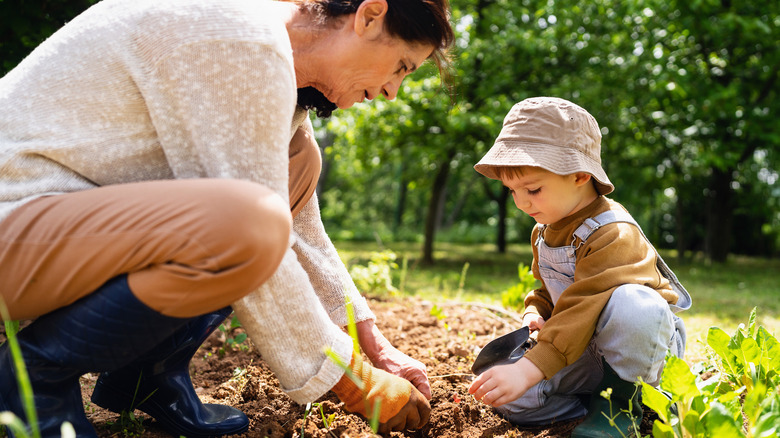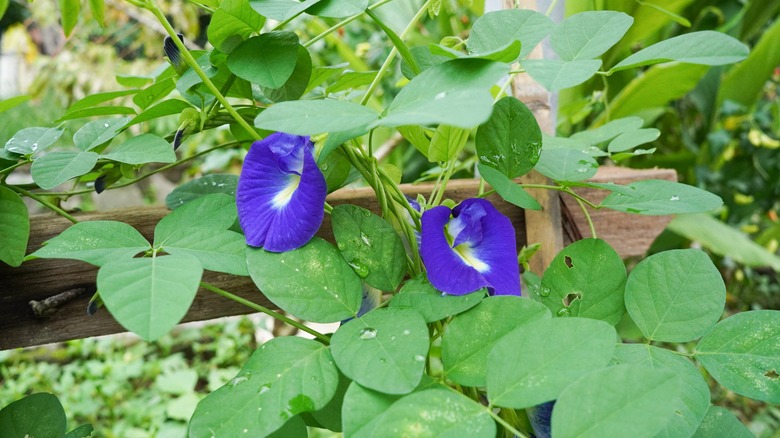The Beautiful Violet-Blue Flowering Plant You May Want To Avoid Growing
Whether you know them by name or not, you'd probably recognize the butterfly pea plant. These brightly colored flowers usually pop up in the summer across about two-thirds of the United States. These naturalized plants appear as far west as New Mexico and as far east as New York. Although non-native, these flowers are not considered invasive in the continental United States. However, they are a high-risk invader in Hawaii.
Also known as blue pea or Asian pigeon wings, the butterfly pea plant gets its name from their resemblance to small butterflies, their petals arching outwards like delicate wings. It's a fitting moniker because these plants are big pollinator attractors and can attract butterflies to your garden. These edible flowers are perennial in warmer climates. Since they are hardy heat- and drought-tolerant plants, they are pretty low maintenance and easy to care for, despite their blooms only lasting half a day.
There's nothing wrong with growing these plants in the continental United States, where they are naturalized. When deciding on plants to add to your garden, it's important to know the difference between invasive plants and aggressive growers — butterfly pea is considered both in Hawaii. Though it isn't a problem on the mainland, butterfly pea's easy-going (and rapid growing) style makes it a threat to native plant species on the islands.
Butterfly pea can push out native species in Hawaii
Invasive plant species can be a problem anywhere they are. Yet island ecosystems are especially delicate because they are far removed from other ecosystems. The isolation makes native plants more vulnerable since they did not face the threat of invasive plants for millions of years, so plants evolved cooperatively. According to the College of Tropical Agriculture and Human Resources at the University of Hawai'i at Mānoa, blue butterfly pea is considered a high risk for invasiveness on their Hawaii Pacific Weed Risk Assessment System. The program notes that its risk assessment is based on a plant's ability to spread and how it can be managed after it takes root.
J. (Julissa) Rojas-Sandoval wrote of the butterfly pea's nature in research published with the Centre for Agriculture and Biosciences International (CABI) Compendium. Rojas-Sandoval noted that the plant is also invasive in Australia, Fiji, French Polynesia, the Galapagos Islands, and other places worldwide. In these locations and Hawaii the butterfly pea is problematic, in part, "because C. ternatea is a nitrogen-fixing species...with negative effects on native vegetation principally in nutrient-poor ecosystems that did not previously contain nitrogen-fixing plant."
Like other invasive plants in Hawaii, butterfly pea makes the ecosystem difficult for native plants. So it's important not to plant these pretty flowers if you live in Hawaii — or bring them with you if you visit.

